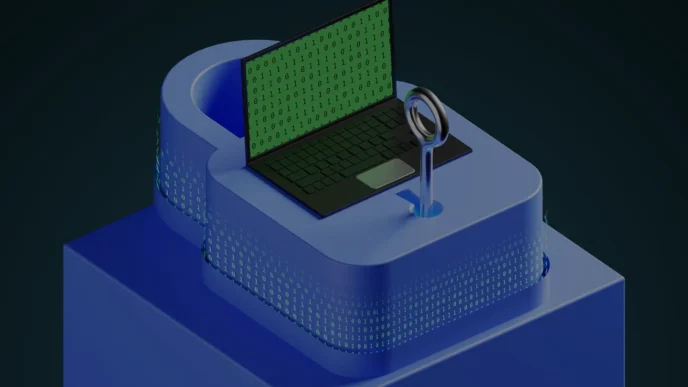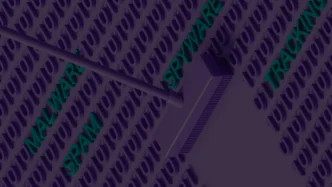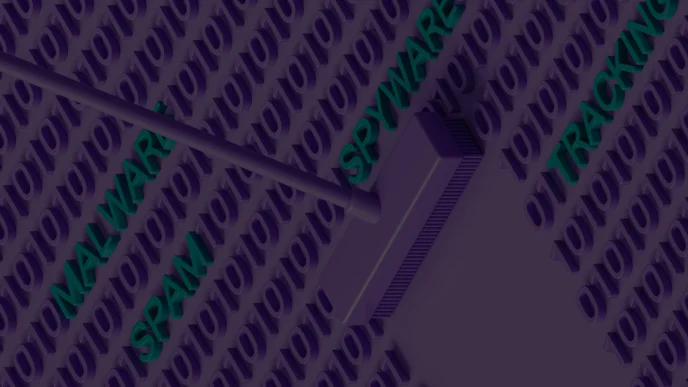In an era where digital threats evolve at lightning speed, organizations must safeguard both their operational technology (OT) and information technology (IT) environments. This article delves into the unique landscapes of OT cybersecurity and IT cybersecurity, exploring how each domain addresses security challenges, the technologies they deploy, and the strategies for harmonizing these seemingly disparate realms.
Understanding OT and IT Cybersecurity Differences
The cybersecurity needs of operational technology systems and traditional IT infrastructures diverge significantly. While IT cybersecurity focuses on protecting data integrity, confidentiality, and availability, OT cybersecurity emphasizes the resilience and safety of physical systems that control critical processes.
What Is OT Cybersecurity?
OT cybersecurity deals with systems that control physical processes—ranging from manufacturing plants and power grids to water treatment facilities. Unlike IT systems, which operate on dynamic networks with frequent updates, OT environments typically run legacy systems that require near-constant uptime. Key aspects of OT cybersecurity include:
- Real-Time Monitoring and Control: OT systems must operate with minimal latency, ensuring that real-time decisions are made without compromising safety.
- Legacy System Protection: Many OT devices were not designed with modern cybersecurity threats in mind, making them vulnerable to attacks.
- Safety-Centric Priorities: OT security emphasizes protecting physical processes, which, if disrupted, can lead to real-world harm.
OT cybersecurity is increasingly important as more operational networks become interconnected, and the potential risks extend from data breaches to physical system failures.
What Is IT Cybersecurity?
IT cybersecurity is dedicated to protecting digital information and ensuring that networked systems are secure from intrusion, data theft, and various cyber threats. Its focus is on:
- Data Protection: Guarding sensitive information against breaches and unauthorized access.
- Network Security: Employing firewalls, intrusion detection systems (IDS), and other technologies to secure interconnected IT systems.
- Rapid Patch Management: IT environments are typically updated regularly to address new vulnerabilities and threats.
IT cybersecurity solutions often leverage automated tools and real-time threat intelligence to maintain a secure digital ecosystem, where protecting customer data and maintaining operational continuity are paramount.
Key Differences in Objectives and Approaches
Though both OT and IT cybersecurity share the goal of safeguarding organizational assets, their core objectives and operational methodologies differ markedly.
Operational Requirements and Technologies
OT environments are characterized by long equipment lifecycles and the need for uninterrupted process control. The following factors are critical:
- High Availability: Downtime in OT systems can halt production or even trigger hazardous incidents. Consequently, any cybersecurity measure must maintain continuous operations.
- Proprietary Protocols: OT networks often use specialized protocols that standard IT security solutions cannot easily address. Tailored security measures, such as custom intrusion detection systems, are essential.
- Environmental and Safety Considerations: OT cybersecurity integrates risk management with operational safety, ensuring that any security breach does not compromise the physical environment or endanger human lives.
IT Infrastructure and Data Security
In contrast, IT environments prioritize protecting intellectual property, customer data, and maintaining system integrity. Key considerations include:
- Dynamic Environments: IT systems are frequently updated and modified, requiring agile security measures that can adapt to changes quickly.
- Data-Centric Focus: With a premium on protecting data, IT security strategies incorporate encryption, access controls, and data loss prevention (DLP) techniques.
- Regulatory Compliance: IT departments often contend with strict regulatory requirements such as GDPR, HIPAA, and PCI-DSS, demanding robust auditing and compliance reporting mechanisms.
Integration and Convergence Challenges
As the digital and physical worlds converge, organizations face the dual challenge of integrating OT cybersecurity with established IT cybersecurity practices.
Security Convergence: Merging OT and IT Perspectives
The push for convergence arises from the need to streamline security operations across both domains. However, merging these systems is not without its challenges:
- Divergent Architectures: OT systems are built for reliability and longevity, while IT systems are designed for flexibility and rapid innovation. Aligning these architectures demands specialized integration strategies.
- Cultural Differences: IT and OT teams often operate under different paradigms. OT professionals prioritize system continuity and safety, whereas IT teams focus on threat detection and data protection. Successful convergence requires cross-training and a shared security framework.
- Unified Threat Management: Combining threat intelligence from both realms can improve overall security. For instance, insights from IT security tools can help identify potential vulnerabilities in OT systems, and vice versa.
Integrating these distinct security cultures fosters a more resilient organization capable of anticipating and mitigating risks across the board.
Technologies and Solutions in OT and IT Cybersecurity
Both OT and IT cybersecurity leverage advanced technologies and innovative solutions tailored to their respective needs. However, the tools and techniques employed differ in focus and application.
Advanced Threat Detection and Response Solutions
For IT Cybersecurity:
- Next-Generation Firewalls and IDS/IPS: These systems monitor network traffic, detect anomalies, and block malicious activities.
- Endpoint Detection and Response (EDR): EDR tools provide continuous monitoring and rapid remediation across endpoints, ensuring quick response to threats.
- Security Information and Event Management (SIEM): SIEM systems aggregate and analyze log data from multiple sources, enabling a centralized view of potential security incidents.
For OT Cybersecurity:
- Anomaly Detection in Industrial Control Systems (ICS): These tools are designed to detect unusual patterns in the operation of industrial equipment, alerting operators to potential issues before they escalate.
- Segmentation and Zoning: OT networks are often divided into segments to restrict lateral movement in case of an intrusion. This segmentation is critical in mitigating the impact of cyberattacks on physical processes.
- Legacy System Protection Mechanisms: Specialized gateways and protocols help protect older systems that cannot be updated with modern security patches, ensuring continued safe operation.
Both areas increasingly rely on real-time monitoring and automated incident response systems. However, solutions for OT cybersecurity must ensure that interventions do not disrupt critical physical processes—a challenge that demands careful balancing of security and operational continuity.
Emerging Technologies and Future Trends
The cybersecurity landscape is evolving rapidly, with innovations reshaping both OT and IT security practices:
- Artificial Intelligence (AI) and Machine Learning (ML): These technologies are being deployed to predict and identify threats before they occur. AI-driven tools are particularly useful in both domains for automating threat detection and response.
- Edge Computing: As data processing moves closer to the source, edge computing offers significant benefits for OT systems. It reduces latency and helps process real-time data more efficiently.
- Cloud Integration: Although traditionally an IT domain, cloud technologies are increasingly being integrated into OT environments for centralized monitoring and data analytics, provided that appropriate security measures are in place.
- 5G Connectivity: With the rollout of 5G, both OT and IT systems are set to benefit from faster, more reliable communications. However, this connectivity also expands the attack surface, necessitating robust security measures.
The convergence of these technologies promises to enhance both OT and IT cybersecurity, driving innovation in threat detection, incident response, and overall network resilience.
Best Practices and Strategies for Cybersecurity in OT and IT
Maintaining a secure operational and IT environment requires a multifaceted approach that combines technical solutions with strategic planning and risk management.
Governance, Risk Management, and Compliance
An effective cybersecurity strategy encompasses strong governance and comprehensive risk management practices:
- Regular Assessments: Conduct frequent vulnerability assessments and penetration tests to identify weaknesses in both OT and IT systems.
- Compliance with Standards: Adhere to industry standards such as IEC 62443 for OT cybersecurity and NIST guidelines for IT security. This compliance not only minimizes risks but also ensures that systems are prepared for regulatory audits.
- Cross-Department Collaboration: Establish a unified security framework that bridges the gap between OT and IT teams. This includes shared incident response plans and coordinated risk management processes.
Incident Response and Resilience Planning
Resilience is key in managing and recovering from cybersecurity incidents:
- Developing Robust Incident Response Plans: Tailor response plans for both OT and IT environments. In OT settings, plans must account for potential impacts on physical processes, while IT plans should focus on data recovery and system restoration.
- Simulated Cyberattack Drills: Regularly conduct drills that mimic real-world attack scenarios. This prepares teams for rapid response, minimizing downtime and operational impact.
- Continuous Improvement: Learn from past incidents to refine strategies. Both OT and IT security plans should evolve based on emerging threats and the latest technological advancements.
Future Outlook: Integrating OT and IT Cybersecurity
As industries continue to digitize and integrate, the lines between OT cybersecurity and IT cybersecurity are blurring. This integration is vital for fostering a resilient security posture capable of addressing contemporary threats. Organizations must invest in cross-functional training, adopt convergent security technologies, and remain agile in their approach to cyber defense.
Expert voices in the field highlight the need for a unified strategy that respects the unique challenges of OT environments while leveraging the innovative solutions of IT security. The evolution of AI, edge computing, and advanced threat detection systems will play a pivotal role in bridging these domains, ensuring that critical infrastructure remains both safe and efficient.
By understanding the distinct roles and integrating the strategies of OT cybersecurity and IT cybersecurity, organizations can safeguard their assets, maintain operational continuity, and prepare for future challenges in an increasingly interconnected world.













